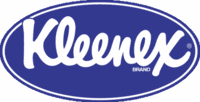舒潔
出自 MBA智库百科(https://wiki.mbalib.com/)
舒潔(Kleenex)——全球最知名的面巾紙品牌,多次被美國《商業周刊》評為全世界100個最有價值的品牌之一。舒潔的官方網址:http://www.kleenex.com/
目錄 |
1924年金佰利公司推出了世界上第一張面巾紙,從此消費者擁有了柔軟、舒適、清潔的面巾紙。“Kleenex”(舒潔)一詞,也被收錄進英文字典,成為“紙巾”的代名詞。作為全球最知名的面巾紙品牌,Kleenex多次被美國《商業周刊》評為全世界100個最有價值的品牌之一。
Kleenex代表著最佳品質、柔軟舒適的感覺和如家的溫馨。從品質卓越的衛生紙和擦手紙到更多的創新產品,例如,Kleenex摺疊式擦手紙和大卷擦手紙都是以專利技術Absorbency Pockets製造,吸水力更強,吸水速度更快,使Kleenex產品獨一無二。
金佰利(Kimberly-Clark)自1872年成立以來,在所有業務所到之處,金佰利公司一直以完美質量、優質服務、公平相待而聞名。擁有130多年的專業造紙經驗,以先進的技術水平傲立於造紙行業。KLEENEX/舒潔作為金佰利旗下的世界知名品牌,行銷150多個國家,全球銷量第一。
現在的金佰利已經成為全球最大的紙巾生產廠商和全美第二大家庭和個人護理用品公司,年營業額超過180億美元,在37個國家設有生產設施,產品銷往150多個國家和地區,金佰利還是名列《財富》雜誌500強公司之一,自1983年以來,曾連續被《財富》雜誌評為最值得敬佩的公司之一。
金佰利在中國的業務發展始於1994年。1996年,KLEENEX/舒潔進入中國市場,服務中國消費者。像世界上其他的地方一樣,舒潔的目標是向中國消費者提供高品質的產品和最新的產品概念,併成為生活中貼心的可信賴的伴侶。目前,金佰利在北京、南京、上海、廣州等地擁有4家生產機構。金佰利公司致力於在中國的長期發展戰略。在10餘年的奮鬥歷程中,金佰利公司在國內取得了良好的業績,特別是在新產品開發,技術創新以及質量控制,環境保護等方面所作的努力被國內業界廣泛稱道。
In the early 1920s, Kimberly-Clark was just beginning its exploration of consumer products. A paper manufacturer, the company had been diversifying its product line and developed a creped wadding for its first consumer product, Kotex®. At this time, marketing a product for the menstrual cycle proved rather difficult and due to the slow acceptance of Kotex® in the marketplace the company had a rather high volume of creped wadding. It was time to find another commercial application for the fluffy material. That's when the company again looked at the creped wadding product it had been working on for possible use as a filter for gas masks in World War I. Early experiments had researchers literally iron out heavyweight Kotex®. Later, they discovered how to produce a softer sheet by changing the blend of ingredients and using different pulps. It was the beginning of Kleenex® facial tissue. Next stop, every household in America.
The company initially saw the Kleenex® brand as a disposable cleansing tissue. They just weren't sure what it would be used to clean. Because the same people who worked on Kotex® were now working on this new cleansing tissue project, they were predisposed to women's needs. They made a connection between the tissue's properties and the growing use of cosmetics by American women. The tissues could be a clean, convenient replacement for the unsightly "cold cream towel" that hung in many bathrooms.
The tissue was trademarked "Kleenex®" and went on the market in 1924 as a cold cream or makeup remover, a disposable substitute for face towels. It is likely the name was derived from the word "cleansing" which was shortened to "clean," while the capital "K" and the "ex" ending were adopted from Kotex®.
All that was needed was to educate the masses. In 1925, the first Kleenex® tissue ad appeared in the Ladies Home Journal showing "the new secret of keeping a pretty skin as used by famous movie stars..." Soon, ads were being carried by all the major women's magazines, including McCall's, Good Housekeeping, Harper's Bazaar, Vogue, Cosmopolitan and Redbook. In 1927, the ads began featuring famous stars of stage and screen for testimonials and endorsements. The "beautiful people" were confessing that Kleenex® tissue was one of their secrets.
Around this time, Kimberly-Clark's head researcher had been using the tissues in place of a handkerchief for his hay fever. He persuaded the head of advertising to try to market the tissues for this use. The adman declined the idea at first but then committed a small amount of ad space to the mention of using Kleenex® tissues as a handkerchief. It wasn't until 1930 the idea of Kleenex® tissue as a handkerchief substitute really took off. By running simultaneous ads, one targeting the removal of cold cream, the other as a handkerchief, it was proven enough the Kleenex® tissue had a new purpose. Sales of Kleenex® tissues doubled the first year of this new handkerchief strategy. Now, instead of being a product primarily for women's use, it now served men and women, young and old alike.
Since Kleenex® tissues came on the market in 1924, it has been the No. 1 brand of facial tissue in the world and has become a genuine global icon. Not bad for product that was voted down by its salesmen who wanted to instead produce disposable diaper inserts for cloth diapers.








